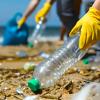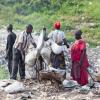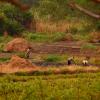
The following statistics are from the last 5 full calendar years: 2019-2023
Publications
Pagination
Pagination
Projects
| Name | Start | End Sort ascending | Abbreviation | Classification |
|---|---|---|---|---|
| ENVINEQUE: An Empirical analysis environmental inequality in the EU | 2019 | 2022 | EnvINEQEU | Global |
| Application of machine learning technology for GNSS IoT data fusion | 2021 | 2022 | CAMALIOT | Global |
| ALternative Pathways toward Sustainable development and climate stabilization (ALPS) Project | 2021 | 2022 | ALPS-12 | Global |
| Energy Demand changes Induced by Technological and Social innovations | 2021 | 2022 | EDITS 2 | Global |
| Cooperative programme for Monitoring and Evaluation of the Long-range Transmission of Air Pollution in Europe | 2022 | 2022 | CIAM-METNO 2022 | Global |
| Digital platforms, fair competition and sustainability transformations: Plausible futures | 2020 | 2022 | DigFaSt | Global |
| Building resilient development paths in the wake of Covid-19: A review of concepts and their applications with specific focus on food systems | 2022 | 2022 | Resilient_FoodSys | Global |
| Direct Air Capture to Fuel | 2020 | 2022 | ADEPT | Global |
| FOLU 2.0 Strategy | 2021 | 2022 | FABLE_FOLU2.0 | Global |
| Spatial Intelligence for Climate and Nature | 2022 | 2022 | SPACES | Global |
Pagination
Engagement
People
- Women
- Men
- Women
- Men
- Women
- Men
- Women
- Men
- Unknown
News

05 November 2024
Women's education influences fertility rates in sub-Saharan Africa

02 September 2024
IIASA-led research lauded with Outstanding Article Award

15 April 2024
Collaborating to devise a strategy for organic waste management in Uganda
Events
Focus

29 August 2024
Experiencing the science that we write about
IIASA researcher, Linda See, shares her experiences at the coalface of where plastic pollution is collected by volunteers during a beach cleanup event.

08 July 2024
Future food demand in The Gambia: can increased crop productivity and climate adaptation close the supply–demand gap?
The Gambia faces significant food availability issues due to low agricultural productivity. IIASA researchers and colleagues used the FABLE Calculator to explore actions to reduce the food supply-demand gap by 2050. The results, published in Food Security, reveal that current cropland will not meet food demand by 2050.
Publications
Hoffmann, R. & Zens, G. (2024). Interrelated drivers of migration intentions in Africa: Evidence from Afrobarometer surveys. Environmental Development 52 e101096. 10.1016/j.envdev.2024.101096. Falchetta, G. , Vinca, A. , Troost, A., Tuninetti, M., Ireland, G., Byers, E. , Hafner, M., & Zulu, A. (2024). The role of agriculture for achieving renewable energy-centered sustainable development objectives in rural Africa. Environmental Development e101098. 10.1016/j.envdev.2024.101098. (In Press) Pachauri, S. , Coldrey, O., Falchetta, G. , & Pelz, S. (2024). Innovation in distributed energy services for sustainable development: case studies from sub-Saharan Africa. Environmental Research Letters 19 (11) e114090. 10.1088/1748-9326/ad8460. Wamalwa, F., Maqelepo, L., Williams, N., & Falchetta, G. (2024). Solar irrigation potential in Sub-Saharan Africa: a crop-specific techno-economic analysis. Environmental Research: Food Systems 1 (2) e025001. 10.1088/2976-601X/ad5e82. Avidar, O. (2024). A holistic framework for evaluating and planning sustainable rural drinking water projects in sub-Saharan Africa. Journal of Rural Studies 107 e103243. 10.1016/j.jrurstud.2024.103243.